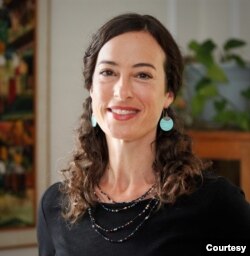Canada will remove mandatory COVID-19 testing for those entering the country as of April 1, a move being met with optimism and varied expectations in both Canada and United States.
Advance COVID-19 screening will no longer be required for visitors wishing to enter Canada via land, sea or air as of the first of the month. Random travelers will still be selected for testing at points of entry in the immediate future.
Travelers entering by sea or through any of the 117 legal points of entry on land will have to enter information into the ArriveCAN app or website before arriving at the border. Before the pandemic, the app had mainly been used only by those arriving by air.
Visitors will still have to be fully vaccinated.
The decision by the Canadian government comes just in time for the start of the peak season for Alaska cruise ships, an industry that was virtually wiped out the past two years. Each passenger will still have to provide a negative antigen test taken not more than 24 hours before boarding a ship.
Visits worth many millions
Vancouver is the home port for many of the ships, while those leaving from Seattle also stop in smaller Canadian cities such as Victoria, Nanaimo and Prince Rupert. Before the pandemic, the Vancouver Convention and Visitors Bureau estimated each ship’s visit to the city generates at least $2.2 million in economic benefits, including hotel bookings before and after cruises.
Walt Judas, chief executive officer of the Tourism Industry Association of British Columbia, is happy with the change, along with the return of cruise passengers and international travelers visiting for meetings, conventions and organized tours. However, he predicted it would take the regional tourism industry three to five years to recover. He said this was because airlines would need to increase capacity and the tourism industry would have to restaff. There is also the threat of new COVID variants.
"And so until that happens, you may still see restaurants closed for part of the week or at least part of the day. You may still see wings of hotels where there is no service or they're closed entirely, attractions with reduced hours," Judas said. "There's a number of factors at play based on the lack of workforce."
Skagway, Alaska, is a stop for many cruise ships to America’s northernmost state. After seeing the number of visitors crash when the pandemic started, the mayor of Skagway, Andrew Cremata, is optimistic the town will see upward of 1 million visitors this year.
He also said there would be a great chance for visits from what he called “independent travelers,” who arrive by road across the nearby border with Canada, or by car ferry from Washington state or British Columbia.
"So we're expecting a lot of independent travelers coming through here," Cremata said. "Not only does that make up for some of what we may not get through the cruise industry, but they tend to stay longer, maybe spend more money in town. And, you know, most of all, we're excited to have our neighbors from the Yukon come back down and see us en masse."
Short-time visitors
Laurie Trautman, director of the Border Policy Research Institute at Western Washington University in Bellingham, said she saw a return of same-day visitors and others making short trips across the border.
"So we had this brief period of time last December, where vaccinated Canadians who were traveling to the U.S. for just 72 hours were exempt from a testing requirement," she said. "And then that was revoked towards the end of December in response to the omicron variant. And during that little brief period of time in our region, we saw quite an uptick in travelers."
Trautman said many of these short trips are for personal visits, shopping or to visit recreational properties.
Cruise ships have scheduled a total of 310 calls at the Port of Vancouver this year. That is an 8 percent increase over 2019, the last full year of sailings.
The Port of Seattle is expecting 296 sailings.
Canada and the United States share the world’s longest undefended boundary in the world, at 8,891 kilometers.










